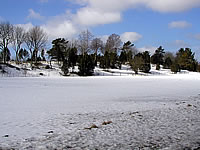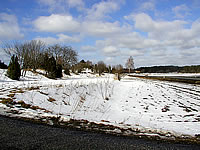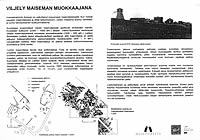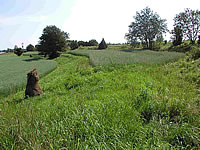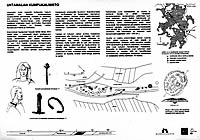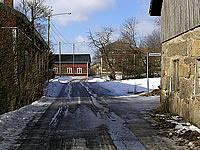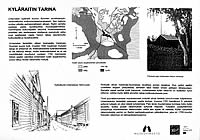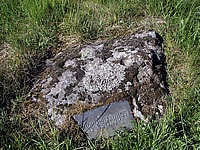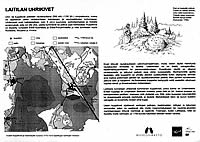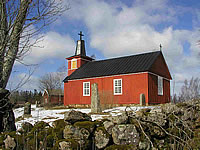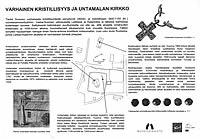| ||||||||||||||||||||||||||||||||||||||||||||||||||||||||||||||||


Untamala PathwayThe cultural pathway in Untamala village presents examples of human traces from various historical periods. The length of the path is about 2,3 kilometres and parts of it are also available for physically disabled people. The pathway starts from the Archaeology Centre Untamala, which is one of the visiting points along the pathway. Visitors are asked to notice that between June-August there are sheep in the meadows. |
|
The earliest palynological evidence for agriculture in Vakka-Suomi area comes from the late Bronze Age or from the beginning of the Pre-Roman period (about 700-400 BC). It has been suggested that the pasture and sheep grazing started in the late Bronze Age and the cultivation at the beginning of the Iron Age. The first signs for agriculture are scarce and weak. The fields were small and the cultivation was just a supplementary source of livelihood. The terrace field in the southern part of the ridge is thought to be from the earliest phase of the cultivation. |
|
The prehistoric site that has made this area famous among Finnish archaeologists is an early Iron Age mound cemetery at the south corner of the village. The grave mounds like these are called Untamala-mounds. The scientists have seen them as evidence of influence from central Sweden, especially from Mälar-lake district. 33 mounds together have been documented and half of them have been proved to be graves. The oldest graves are from the Early Roman period (about 50-200 AD), but the cemetery has been in use as late as in the Migration period (about 400-600AD). It has been suggested that there has been some kind of migration from eastern Sweden during the early Iron Age. |
|
The structure of the village is from the Middle Ages. It was at the 13th century when the so-called "open field system" was brought in use. The households were formed of the building groups situated as a quadrate side by side along the main road. The whole village has been burnt down several times. One of the most destructive fires took place at the 1687 when most of the houses were destroyed. The houses were made of timber and the fire spread out rapidly through the village. The oldest house (so called Sarkki-house) is now a local museum. It was built at the beginning of the 18th century. It is probable that the erected stones on the southern part of the main road are from Iron Age. |
|
There are three sacrificial stones at the Untamala village. On the stones there are small carved cups. People have sacrificed in the cups the most precious corn and milk in the spring. In these same areas the sacrificial stones have been used also in the historical times, but most of them are from the late Iron Age (about 500 - 1150 AD). Usually they are situated beside the cremation cemeteries, and the sacrifice rite has been made to propitiate the ancestors. |
|
The present church at Untamala is from the year 1785. How ever there has been a small village church at the same place already in the Middle Ages. At the graveyard there is also one of the oldest Finnish gravestones. According to the local tradition, this gravestone was believed to be a giant's whetstone. Actually there is a late Iron Age cemetery from the Crusade Period, from the 11th century. Unfortunately a great part of this cemetery has been destroyed when a farming house was built on the site about fifty years ago. Beneath the gravestone two women's graves were found in the excavations made at the place in 1953. |
|
|
|
|

